CNC Machining Brass Parts
Brass is an alloy made from copper and zinc, with strong wear resistance, ow coefficient of friction, low melting point, good malleability, and high corrosion resistance, it’s incredibly useful for hot machinery and products. So the brass is an ideal material for manufacturing CNC machining parts. And precision machined brass parts are one of the most commonly used metal CNC parts, which are often used to make valves, water pipes, air conditioning connecting pipes and radiators. they can be found in electrical products as well as plumbing, the medical industry, and many consumer products.
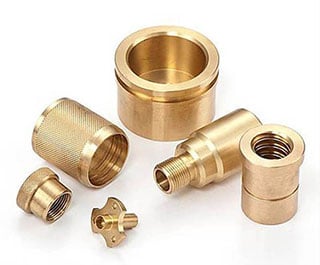
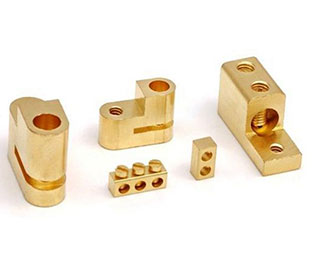
Precision CNC Machined Brass Components For Sale – China Leading CNC Brass Machining Services Supplier
Looking for precision brass parts machined by an experienced and reliable CNC components manufacturer? Junying’s custom brass machining services can be your ideal choice. We have over 10 years of CNC machining experience, have capabilities to manufacture simple or complex brass products including high quality precision brass CNC milled components, brass CNC turned components and brass CNC drilling components to meet your demands with reliable operators, sophisticated machinery and equipment at our disposal. The CNC machined brass parts we produce are non-magnetic, easy to cast, and usually doesn’t require surface finishing. All of our brass machined components are subject to our rigorous inspection regime with designated inspectors, in-process inspection and a full final inspection completed on every part.
Features & Advantages Of Custom Machining Brass CNC Parts
– Brass parts & components provide tighter seals for fittings
– Can cut down on production costs and is extremely strong under high stress
– Can withstand extreme temperatures
– Easy to cast
– High heat and corrosion resistance, rustproof and more premium properties
– Extremely durable and long service life
– Low weight and easy to take or install
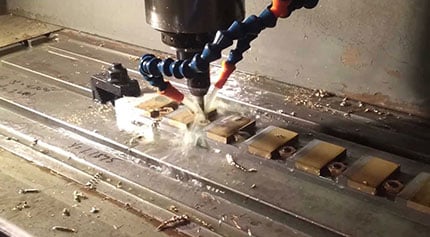
CNC Machining Methods for Brass Materials
Brass is compatible with a variety of CNC machining operations, including milling, turning, and drilling. Due to its machinability, parts can be produced with high precision and fine detail. JunYing CNC machining center offers several ways to process brass materials, each suited to different part geometries and production needs. The main CNC brass machining methods include:
✅CNC Brass Milling
CNC milling uses rotating cutting tools to remove material from a brass workpiece, creating flat surfaces, slots, holes, and complex contours. Milling is highly versatile and ideal for parts with intricate features or multi-sided shapes. Brass’s softness and excellent machinability allow for efficient, precise milling with smooth surface finishes.
✅CNC Brass Turning
CNC turning is performed on a lathe, where the brass material rotates while a stationary cutting tool shapes it. This method is perfect for producing cylindrical or round components such as bushings, shafts, and threaded parts. Turning brass results in clean, accurate surfaces and is especially efficient for producing high volumes of symmetrical parts.
✅CNC Brass Drilling
CNC drilling involves creating holes in brass parts with high precision. Using automated feed rates and spindle speeds, drilling can be integrated into milling or turning operations. Brass’s chip formation and low hardness make it easy to drill clean, burr-free holes, even in production runs.
✅CNC Brass Tapping & Threading
Tapping and threading are processes to create internal or external threads in brass components. Due to brass’s machinability, threads are easy to form, either using dedicated tapping tools or thread milling cutters. This method is commonly used for parts like valves or connectors that require threaded joints.
✅CNC Brass Engraving
CNC engraving uses precise cutting tools to etch text, logos, or patterns onto brass surfaces. The material’s smooth finish and ductility allow for detailed, crisp engraving, making it popular for signage, decorative items, and identification tags.
Brass Material Grades for CNC Machining
Selecting the appropriate brass grade is important for achieving the desired machining results. At CNCLATHING.COM, we offer various Brass materials to meet worldwide clients’ demand:
C360, aka C36000 brass, is the most used brass material for CNC machining, also known as "free-cutting brass" or "free machining". C360 contains a higher lead content, which acts as an internal lubricant and grants it a high machinability.
Chemical Composition:
- Copper (Cu): 60.5–63.5%
- Zinc (Zn): 35.4–37.7%
- Lead (Pb): 2.5–3.7%
Properties:
- Hardness: 78–90 HRB | ~100–180 HV | 15–25 HRC (approx)
- Toughness: Moderate; lower than high-copper brasses
- Electrical Conductivity: 23–28% IACS
Used For: Precision parts (gears, valves, lock cores, pipe fittings, instrument accessories), threaded parts, automatic lathe parts, complex profiles
Brass C260, aka C26000 brass, is lead-free, environmentally friendly, widely used for cartridge cases and general stamping parts, with good cold workability and moderate strength.
Chemical Composition:
- Copper (Cu): 68.5–71.5%
- Zinc (Zn): 28.5–31.5%
- Lead (Pb): ≤0.07% (essentially lead-free)
Properties:
- Hardness: 50-65 HRC
- Toughness: Good, suitable for cold working
- Electrical Conductivity: Relatively high, suitable for electrical applications
Used For: Cartridge cases, deep-drawn parts, musical instruments, decorative parts, plumbing accessories, plates, pipes
Commonly used for manufacturing nuts, bolts, washers, and other fasteners, with good cold formability and corrosion resistance.
Chemical Composition:
- Copper (Cu): 65–68%
- Zinc (Zn): 32–35%
- Lead (Pb): ≤0.07% (essentially lead-free)
Properties:
- Hardness: 55-70 HRC, moderate, suitable for cold working and moderate load cutting.
- Toughness: Good, suitable for cold working and bending.
- Corrosion Resistance: Good, suitable for outdoor and water-contact parts.
Used For: Hardware, decorative parts, musical instrument pipes, shells, strips
Brass C27200 is suitable for condenser tubes, radiator fins, and other parts requiring high strength and good plasticity, with excellent hot and cold workability.
Chemical Composition:
- Copper (Cu): 62–65%
- Zinc (Zn): 35–38%
- Lead (Pb): ≤0.07% (lead-free)
Properties:
- Hardness: 60-75 HRC, high, suitable for wear resistance and strength requirements.
- Plasticity: Good, suitable for cold forming like bending and deep drawing.
- Thermal Conductivity: Good, suitable for heat exchangers and high conductivity applications.
Used For: Condenser tubes, radiator fins, heat exchangers, parts requiring higher strength and good ductility.
C27400 features slightly less lead, reducing its internal lubrication but still offering good machinability. It offers a balance between strength, formability, and environmental compliance.
Chemical Composition:
- Copper (Cu): 61–64%
- Zinc (Zn): 35–38%
- Lead (Pb): ≤0.09% (low-lead)
Properties:
- Hardness: 55–70 HRC, moderate, suitable for both strength and machinability.
- Plasticity: Good, good for cold forming and moderate drawing or bending.
Used For: Plumbing fittings, mechanical connectors, hardware parts, architectural components, and any parts requiring good machinability with lower lead content for environmental or regulatory compliance.
C28000 has a higher zinc content, which enhances its strength and working properties but makes it less machinable than C36000. So it is commonly used in shipbuilding and marine engineering for its excellent corrosion and wear resistance.
Chemical Composition:
- Copper (Cu): 59–62%
- Zinc (Zn): 38–41%
- Lead (Pb): ≤0.07% (lead-free)
Properties:
- Hardness: 55-70 HRC, moderate, suitable for high wear-resistance applications.
- Corrosion Resistance: Excellent in seawater and industrial atmospheres, ideal for marine environments.
- Toughness: Good, suitable for hot and cold forming.
Used For: Marine hardware, propellers, and large wear-resistant components.
C37700 brass is widely used in hot-forged plumbing fittings, valves, and other parts requiring high strength and corrosion resistance, with good hot working properties.
Chemical Composition:
- Copper (Cu): 57–61%
- Zinc (Zn): 35–39%
- Lead (Pb): 1.0–2.5%
Properties:
- Hardness: 60-75 HRC, high, suitable for high-strength parts.
- Forging Performance: Excellent, suitable for complex shapes.
- Corrosion Resistance: Excellent, suitable for water systems and outdoor environments.
Used For: Forged plumbing accessories, valves, mechanical accessories
C38500 brass is commonly used for architectural hardware, decorative fittings, and other components that require excellent machinability, a high-quality surface finish, and good corrosion resistance. It is especially valued for its ability to produce complex shapes and visually appealing parts.
Chemical Composition:
- Copper (Cu): 57–61%
- Zinc (Zn): 35–39%
- Lead (Pb): 2.5–3.5%
Properties:
- Hardness: 50–65 HRC, moderate, good for both cold working and machining.
- Corrosion Resistance: Good, suitable for most indoor and decorative environments.
Used For: Architectural trim, decorative hardware, door and window fittings, handles, and other parts where both machinability and attractive appearance are important.
C33000 brass is widely used in plumbing tubes, fittings, and components that demand good machinability, resistance to dezincification, and compliance with low-lead regulations. It is ideal for parts exposed to water and moisture over long periods.
Chemical Composition:
- Copper (Cu): 65–68%
- Zinc (Zn): 32–35%
- Lead (Pb): 0.5–1.5%
Properties:
- Hardness: 45–60 HRC, relatively low, suitable for fine and precision machining.
- Dezincification Resistance: Good, making it suitable for water and moist environments.
- Corrosion Resistance: Reliable for plumbing and water system applications.
Used For: Plumbing tubes, pipe fittings, water supply components, valves, and other parts requiring excellent machinability, corrosion resistance, and low-lead content.
C35300 brass is commonly used for bushings, bearings, gears, and valve components requiring exceptional machinability, good self-lubrication, and reliable performance in precision applications. High lead content gives it outstanding free-cutting properties and smooth finishes.
Chemical Composition:
- Copper (Cu): 61–64%
- Zinc (Zn): 34.5–37.5%
- Lead (Pb): 2.0–3.0%
Properties:
- Hardness: 40–55 HRC
- Machinability: Exceptional, ideal for high-speed, high-precision CNC processes.
- Self-Lubrication: High
Used For: Bushings, bearings, precision gears, valve parts, and other components where exceptional machinability, low friction, and high production rates are required.
CNC Machined Brass Applications:
CNC Machined Brass parts are widely used to manufacture components like lock parts, gears, pipe fittings, valves, door hardware, and decorative items. Its combination of machinability, corrosion resistance, and low friction makes it a preferred choice for plumbing, electrical, and mechanical applications. In mass production, brass offers cost-effectiveness due to its ease of cutting and reduced tool wear. Its aesthetic qualities ensure that it remains popular for jewelry and architectural details as well.
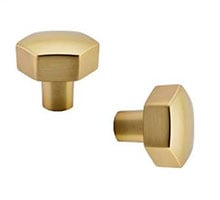
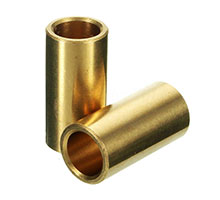
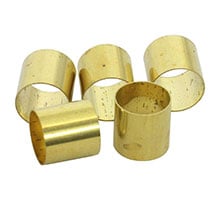
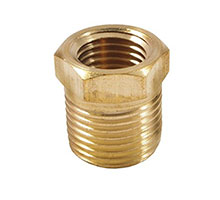
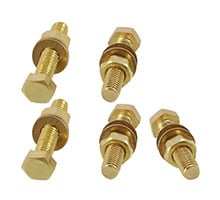
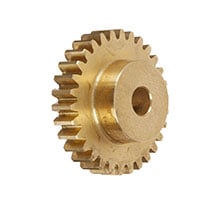
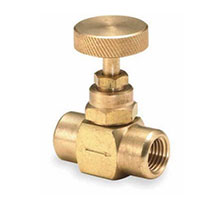

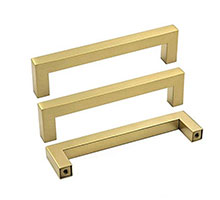
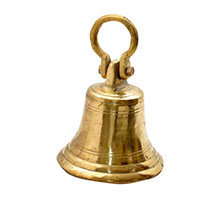
Brass is an alloy primarily composed of copper and zinc, and sometimes small amounts of other elements. It has been used in manufacturing for centuries, long before materials like aluminum became widely available. Brass stands out for its attractive gold-like appearance, excellent corrosion resistance, and ease of fabrication. This material has found a place in both everyday objects and specialized industrial applications, thanks to its combination of mechanical properties and machinability.
Both brass and copper are valued for their properties, but each suits different needs. Brass is harder and offers better corrosion resistance, making it suitable for mechanical parts and fittings. Copper, on the other hand, is more electrically conductive and is chosen for applications requiring optimal electrical or thermal conductivity. However, copper is softer and can be more difficult to machine, which may result in higher production costs.
Brass is easy to machine because of its relatively soft composition and the presence of elements like lead in certain grades. This allows for smooth cutting, low tool wear, and high speeds during CNC operations. Its chip formation is favorable, reducing the risk of built-up edge and enabling the production of complex shapes with precision.
Brass CNC machining is a good choice when you need parts that combine good mechanical strength, corrosion resistance, and a quality surface finish. It is ideal for components that require low friction, such as valves, or where appearance is important, such as decorative hardware. It is also cost-effective for medium- to high-volume production due to its machinability.
When it comes to CNC machining, C36000 brass, often called “free machining brass” or “free cutting brass,” is widely regarded as the best option. This grade is specifically formulated for machinability, containing a higher lead content that acts as an internal lubricant during cutting. Thanks to this composition, C36000 has a machinability rating of 100, which is the standard benchmark for other copper alloys.
C36000 brass allows for fast, precise machining, producing clean edges and smooth surfaces with less tool wear and lower cutting forces. It is ideal for high-speed machining and is commonly used in manufacturing parts like fittings, gears, and lock components. If you need brass parts that require tight tolerances, intricate shapes, or high-volume production, this grade provides the best balance of ease of machining, durability, and cost-effectiveness.
While other brass grades like C27400 or C28000 are available and can be used for specific requirements (such as higher strength or different working properties), they do not match the overall machinability and versatility of C36000. For most CNC machining applications, C36000 remains the top choice due to its excellent performance, consistent results, and broad industry acceptance.
Brass may not be suitable if your application demands extremely high strength or temperature resistance, as it has a lower melting point than steel or some aluminum alloys. In situations where maximum electrical or thermal conductivity is needed, pure copper is often preferable. Additionally, if the working environment could cause rapid corrosion of certain brass grades, or if lead content is a concern (such as in food or medical applications), alternative materials should be considered.


